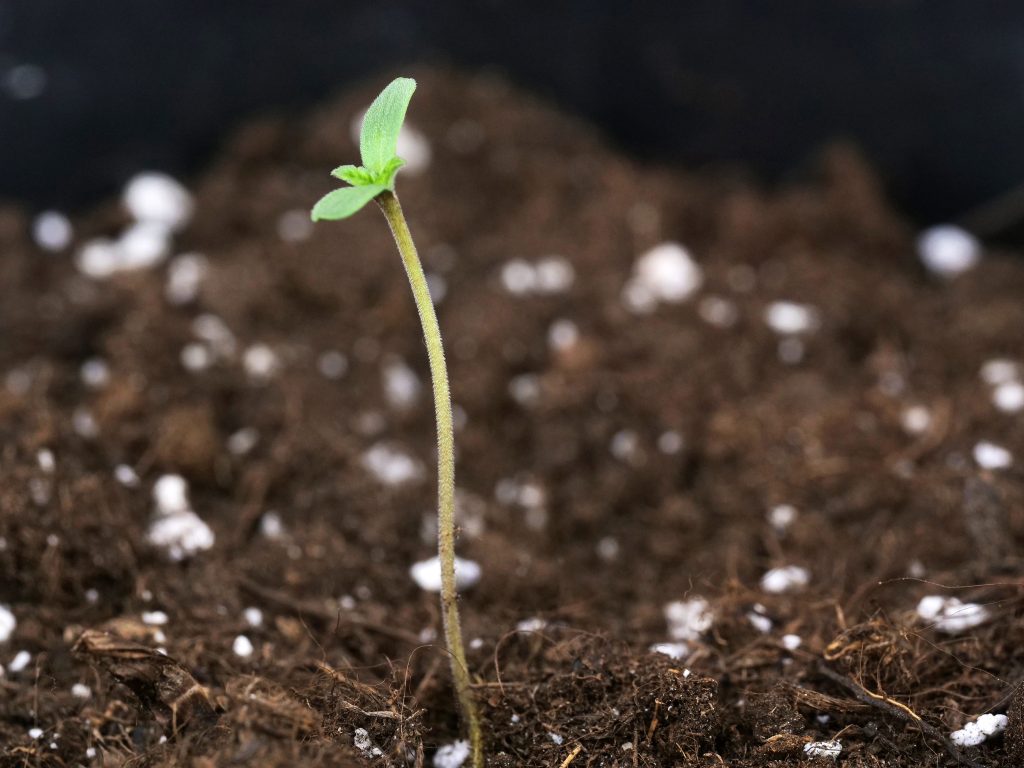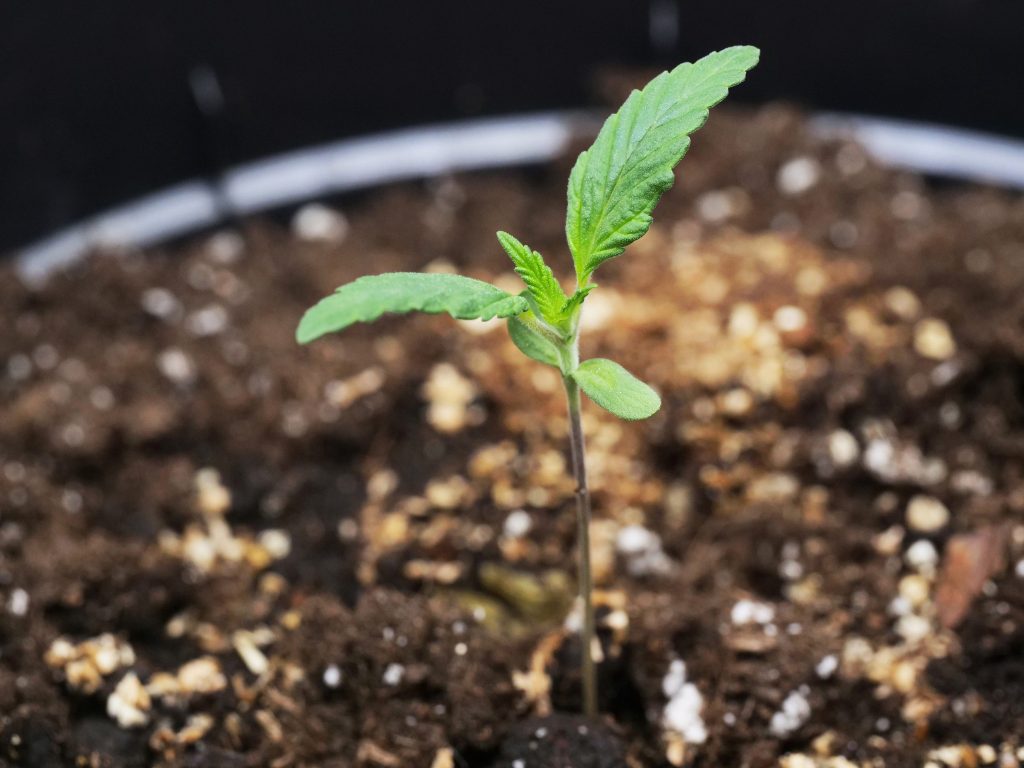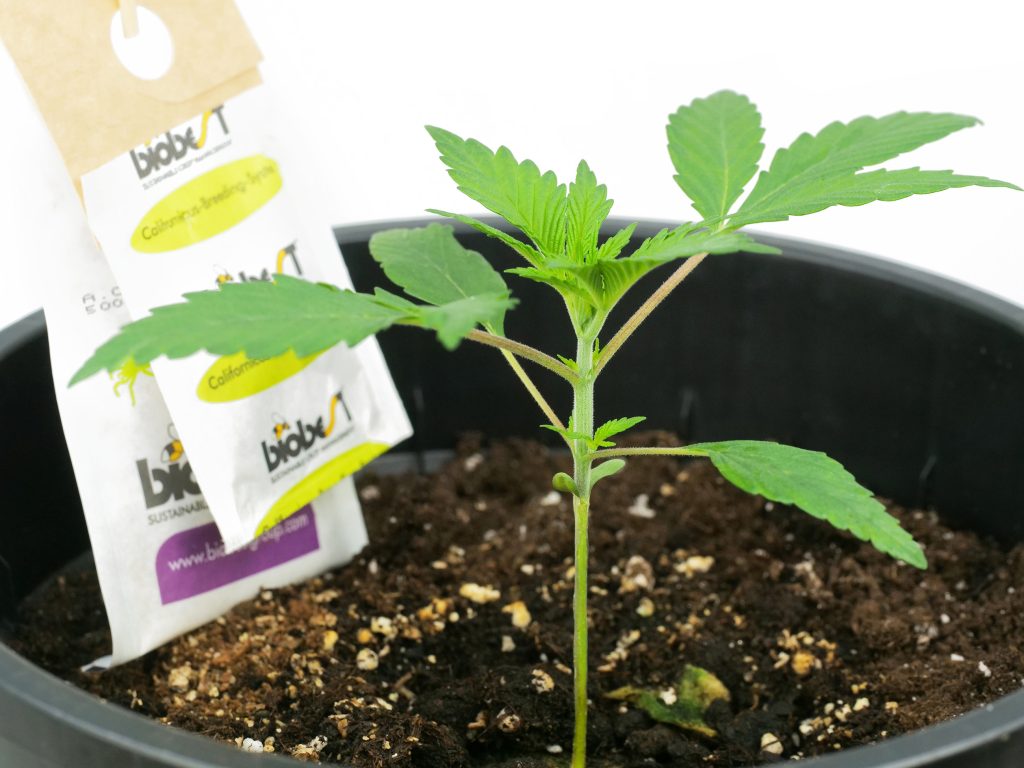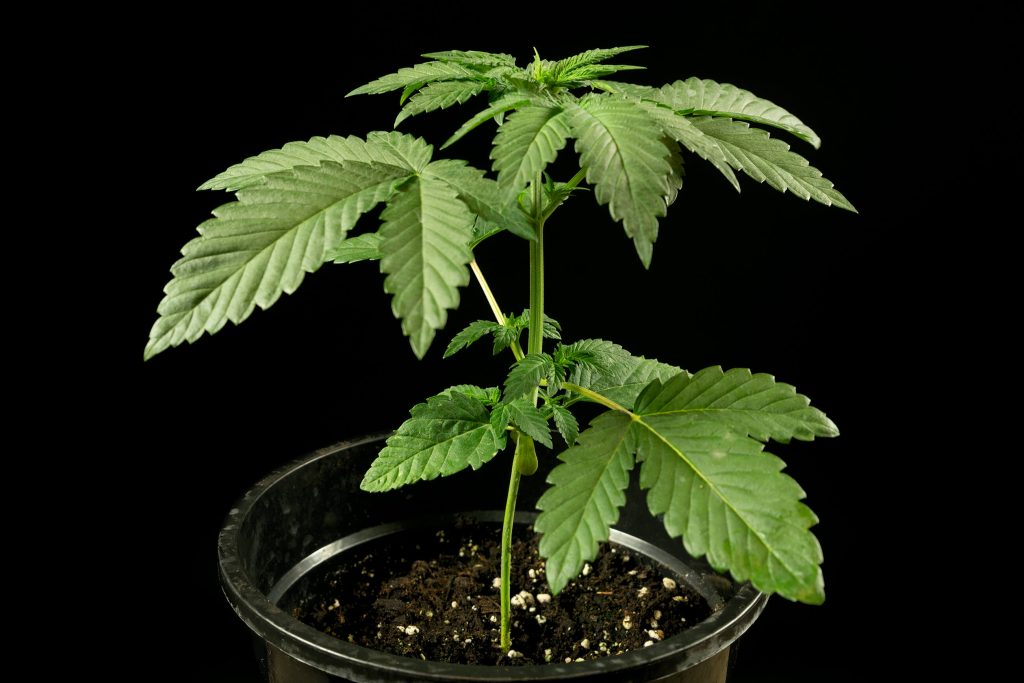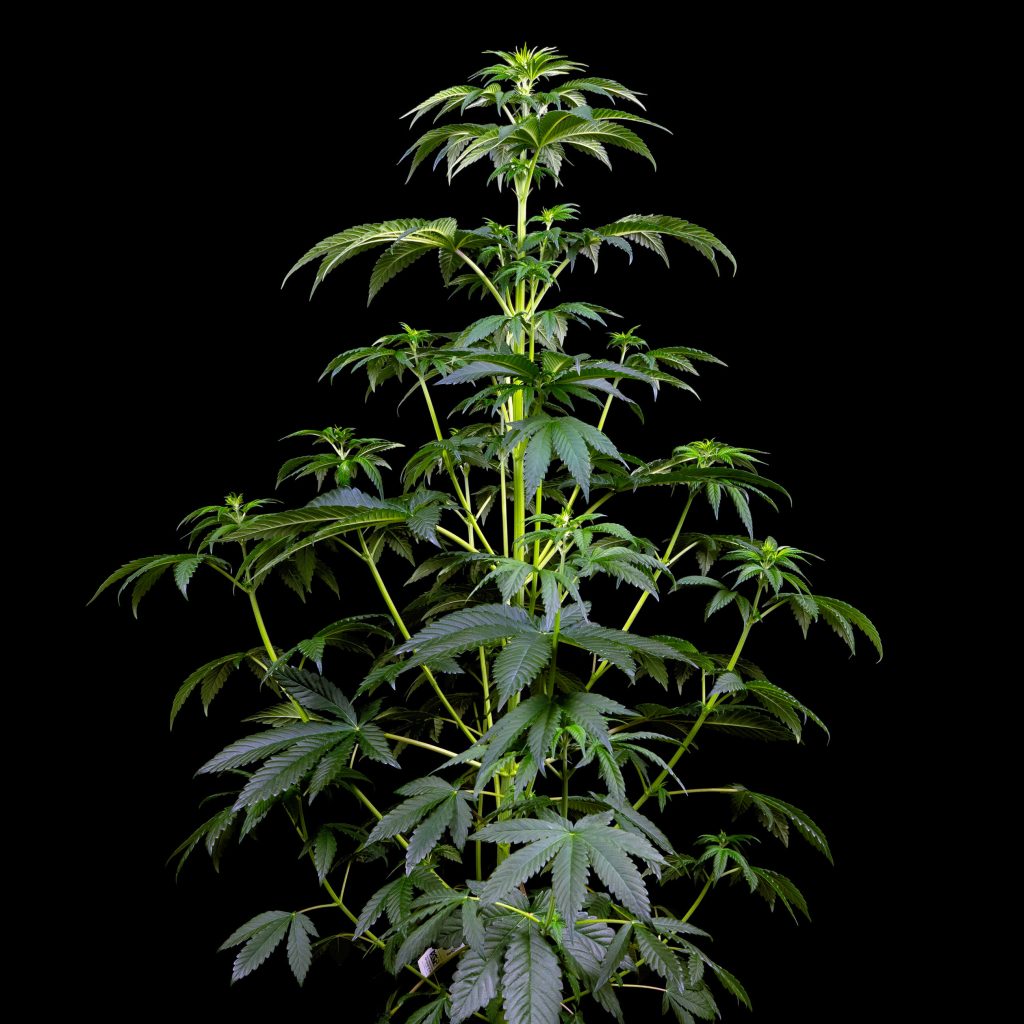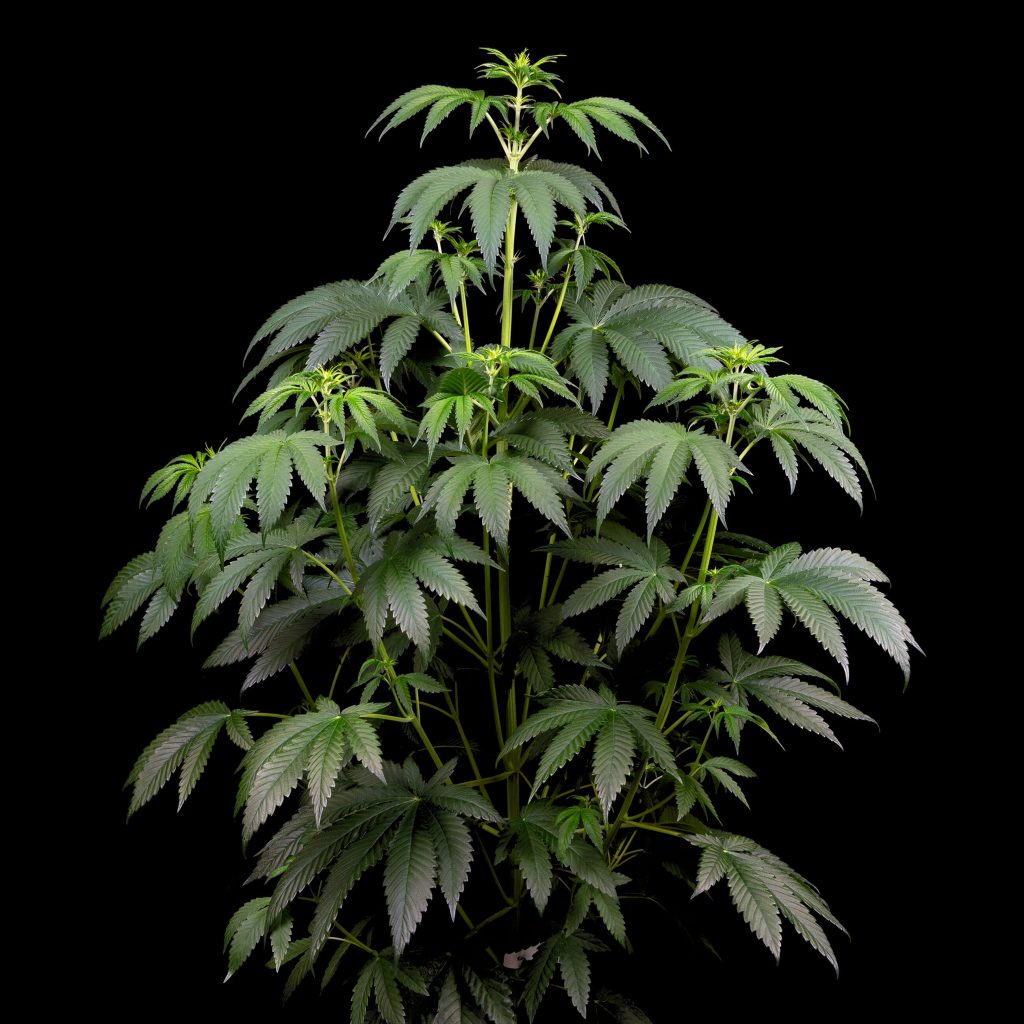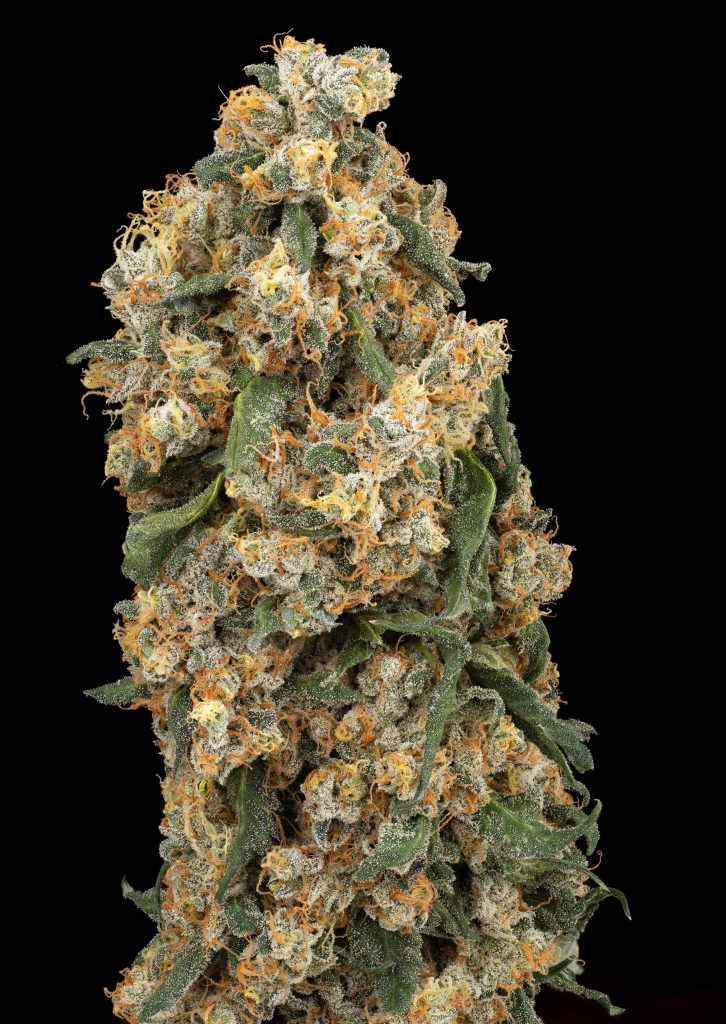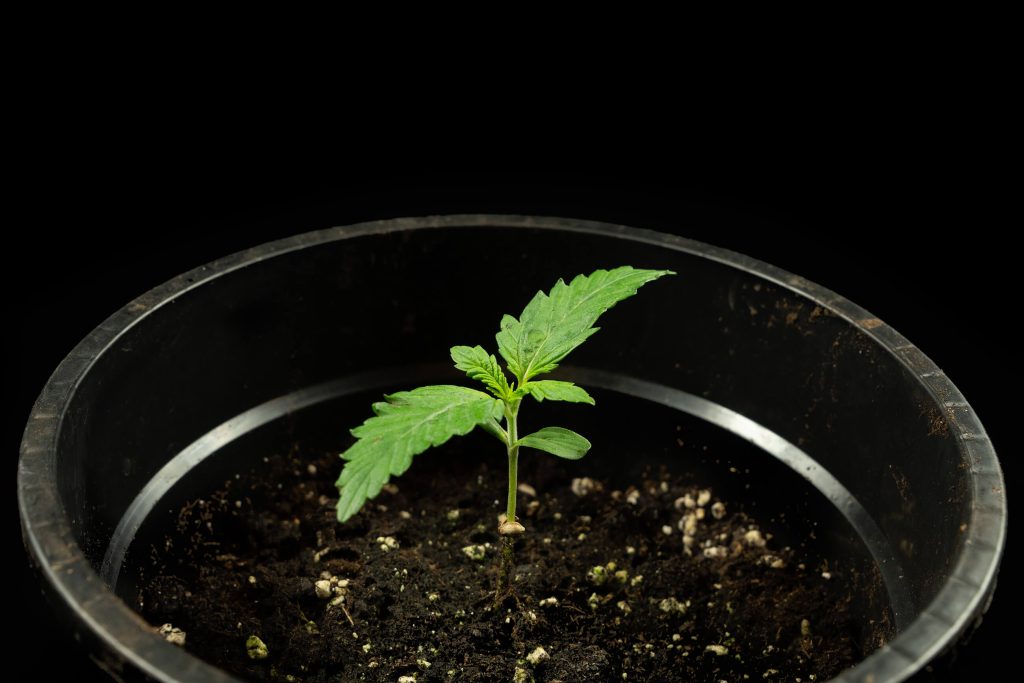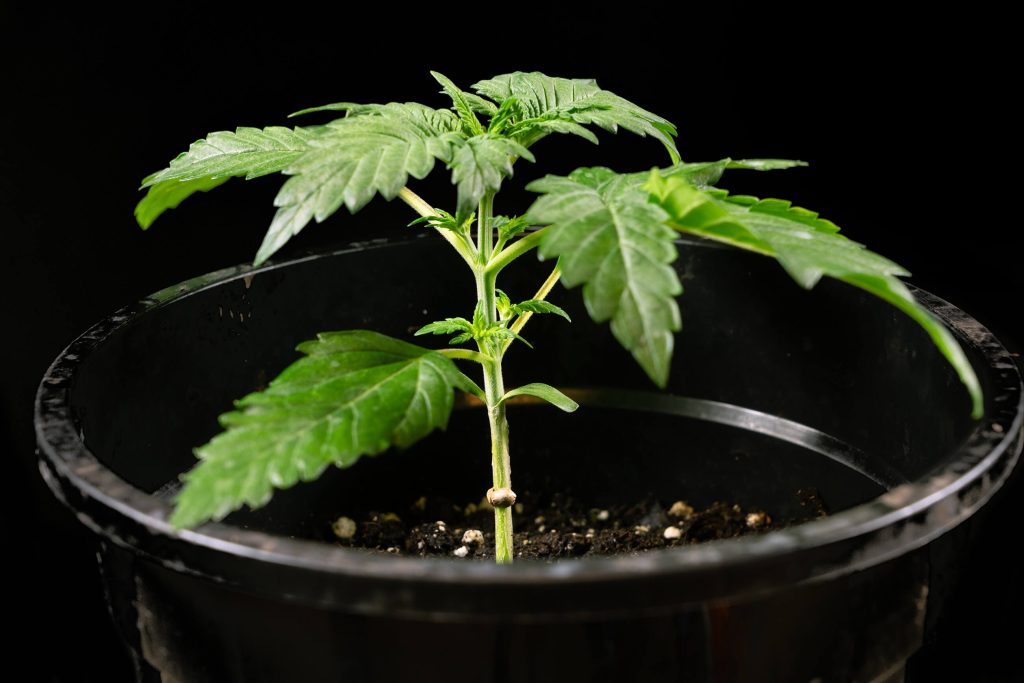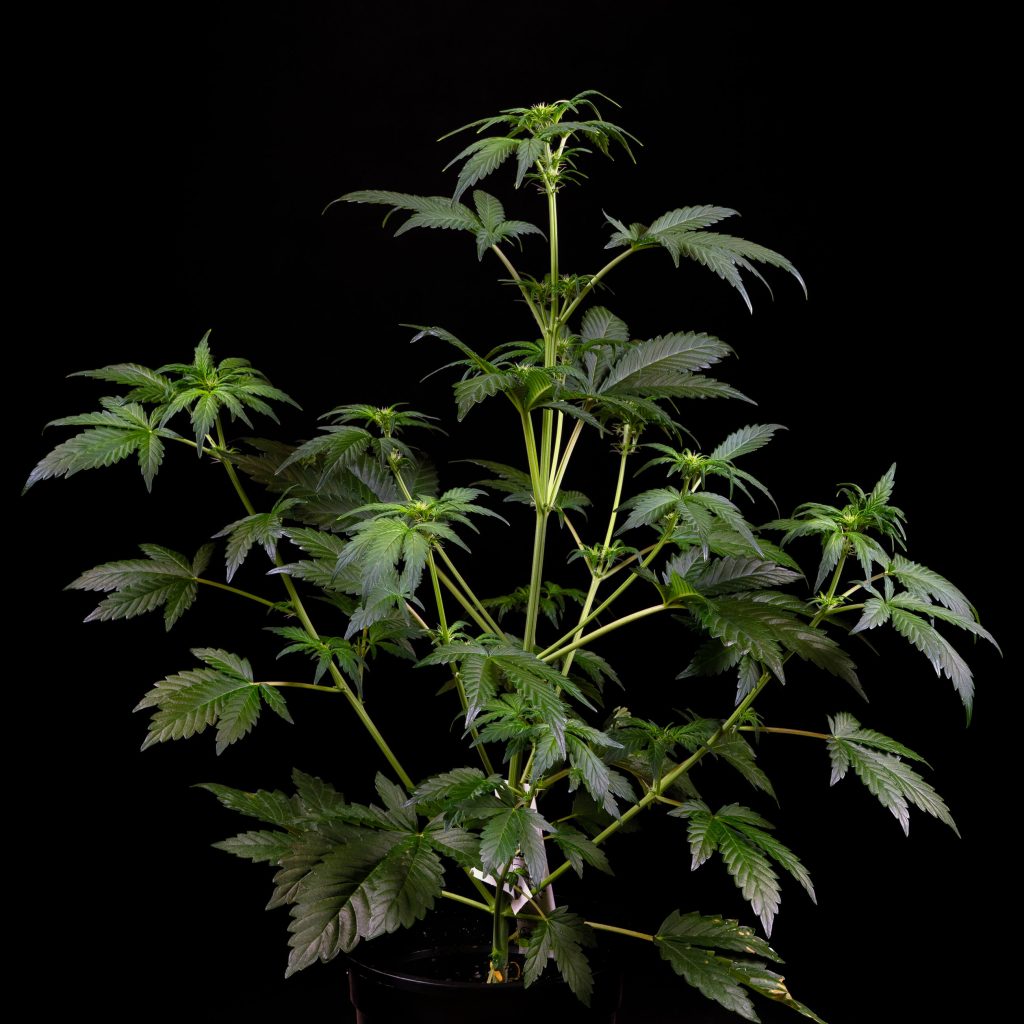Grow Reports
Jack Herer Feminized Grow Report
Published
2 years agoon
By
admin
Jack Herer Feminized seeds were high on our priority list, and during this cultivation cycle, we document the important details and specific conditions used to achieve a successful harvest. Our grow report covers many unique aspects like morphology, flowering duration, and profile. In the end, we take our finished flower for THC testing too.
Flowering stage: 70 days
Total time, seed to harvest: 91 days
Final yield: 80 grams
THC content: 26.92%
Jack Herer Feminized seeds (also available in regular seeds) were created to honour a legend in cannabis history. Jack Herer is widely known as a cannabis advocate and author of The Emperor Wears No Clothes. In the 1980s, Sensi Seeds created what is known as Jack Herer by combining genetics from a Haze, Northern Lights #5, and Shiva Skunk.
Our indoor garden featured white walls to reflect and diffuse light onto the plants. We circulated air through our growing space using multiple fans strategically positioned above and below the canopy level, increasing airflow and removing unwanted stagnant air. Air was drawn into the growing area by the inline fan and pulled through a carbon filter to provide a layer of odour control.
We used a 1000W Green Power Phillips HPS light with a reflector. The light was mounted in a fixed position roughly 300 cm above the soil line. The soil of choice was BAC Lava Mix, supplemented by Bio Grow and Bio Flower nutrients throughout the different life stages of our Jack Herer Feminized.
Environmental conditions during the grow were closely watched. Keeping your plants in the right environment helps produce the best yields possible. Temperatures were maintained at 23°C during the lights-on period and 21°C when the lights were off.
For the vegetative period, lights were run 18 hours on / 6 hours off schedule. For the flowering cycle, lights were switched to 12/12. Our humidity levels in the grow room were steady at 65% for the vegetative period and then reduced slowly during the flowering stage.
We placed our Jack Herer Feminized seeds into pre-moistened jiffy cubes, with the pointed side of the seed facing down. Within a few days, we saw the seed hull cresting the top of our jiffy pellet. As the seed emerged from the hole, it shed the husk to reveal the bright green cotyledon leaves, supplying the young plant with roughly a week’s worth of nutrients to grow.
The Jack Herer Feminized seed was left in the jiffy pellet for a few days until we saw roots coming out of the bottom and side walls of the pellet. It was then time for us to transplant this into a 1-litre container.
To start week one, we transplanted our Jack Herer Feminized seedling into the soil. We delicately covered the long roots it had grown in the jiffy pellet, leaving the cotyledon just above the soil line. We subsequently gave our plant 100 ml of water, which was pH adjusted to a level of 6.2 and applied directly at the base of the stem,
Infestation of plant-damaging bugs can ruin a grower’s hard work in little time. Throughout the grow cycle, we will proactively release beneficial insects to reduce the likelihood of that happening. These predators hunt and eat certain undesirable insects. This time, we dispersed a satchel of Hypoaspis Miles, which helped control fungus gnats and thrip pupae.
At the beginning of week two, we noticed the roots peaking from the drain holes in the bottom of our plant. This indicated good vigour from our Jack Herer Feminized, and we made the decision to transplant it into a larger, 5-litre container where it would remain for the remainder of the cultivation cycle. We continued to give our plant 100 ml of water applied around the base of the stem when needed.
To help encourage a strong main stem and branches, we kept a light breeze on our seedling. This forces the cell walls to build more robust layers to sustain the wind force. Another technique we used to strengthen our Jack Herer Feminized was to turn each plant 1/2 turn each night. Not all of our plants were directly under the light, so turning them forces them to readjust to the light’s position, which also builds thicker cell walls.
Week three recorded good vertical growth of our Jack Herer Feminized. Given the biomass above the soil, we ascertained that the root system was developing simultaneously. We added a nutrient solution to our water each time we feed the plant. The Bio Grow nutrients were combined with the water, and the EC and pH were checked before applying them to the soil. The desired EC was 1.6, and the pH remained constant at 6.2.
In a continued effort to keep unwanted critters away, we released two more types of beneficial insects. We hung sachets of Amblyseius Cucumeris and Amblyseius Californicus at the base of our Jack Herer Feminized. The first is a predator of thrip larvae, and the latter is a hunter of the dreaded two-spotted spider mite. So far, we have not seen any external pest pressure in the garden, which means our IPM program is adequate.
Although our plant was 19 cm tall at the start of week four, we decided to change the light schedule and initiate the flowering cycle. This is done by adjusting the light schedule to 12/12, giving our Jack Herer Feminized equal amounts of light and darkness per day. Our plant had a good amount of lateral branching, and each branch had large, broad, green leaves, which were busy photosynthesising light into essential sugars to support growth.
We also flushed the soil using 1500 ml of pure water. Flushing is meant to remove built-up salts that have accumulated in the soil from regular feeding. Because of the large volume of water, most water runs through the medium, helping to remove impurities.
Staying vigilant against the potential for pest invasions, we released another sachet of Hypoaspis Miles to combat fungus gnats and thrip pupae. We know that during the early flowering stage, also known as “the stretch period”, our Jack Herer Feminized would continue its vertical growth before slowing to focus on biomass.
Week five saw an increase of 13 cm from the week before, and due to the increased root development, we started giving our Jack Herer Feminized 200 ml of solution. We adjusted the amount of nutrients slightly, and the final EC before applying to the plant was an EC of 1.7.
We had not yet defoliated any large fan leaves, and we preferred to keep them on to harness and convert the light intensity into energy to sustain plant growth. Some of the lower branches were focusing their growth outwards to avoid the shade of the leaves above. As we were entering the phase of bud development, we reduced the humidity in the grow area to an even 60% RH.
In week six, we saw the initial pre-flower development, indicated by the stigmas forming at the base of each node and at the tips of each branch. The Jack Herer Feminized seeds will only produce female plants, which is beneficial for many reasons. It maximises space in the garden by filling it with only female plants. There are no males that would need to be identified and removed. Another quality trait of this strain which removes the guesswork for new growers.
We again adjusted the level of nutrients in our solution. This time we adjusted the feeding solution to an EC of 1.8. Each feeding from here until the final flush will be at an EC of 1.8 and a pH of 6.2. The volume of the solution was also increased to 350 ml per day.
Staying on top of our IPM procedures in week seven, we released more sachets of Amblyseius Cucumeris to battle potential thrip larvae and Amblyseius Californicus to eradicate any two-spotted spider mites that may be lurking in the garden. The sachets were placed at the base of the plant, allowing the insects to patrol the soil and the plant.
Week eight saw the most significant week-over-week increase in vertical height. The Jack Herer Feminized grew 20 cm from the previous week and now stood 77 cm above the soil. Our plant has more than doubled in height since initiating the flowering cycle, which is something to consider for growing spaces with limited ceiling height.
We started the week with a pure water flush and poured 1500 ml of pure water over the entire soil surface. The excess nutrients in the soil were washed out of the bottom into our drainage pans below, and we resumed watering with our feed solution for the remainder of the week. Always remember, It is essential to collect and remove this water, do not let your roots sit in the stagnant, high EC water that has been flushed from the plant.
Once that was complete, our final round of beneficial insects were deployed, and we hung one more sachet of Hypoaspis miles on the lower branches.
Vertical growth continued in week nine, but we noticed more of a shift to bud production. Our Jack Herer Feminized now had little puffs of stigmas emerging from the bracts at each of the nodes and branch tips. Trichome formation was also starting to materialize into a generous layer of glistening heads on the flowers and surrounding leaves. The watering volume was increased to 400 ml, and the room humidity was reduced to 58%.
Our plant maintained a healthy dark green leaf colour. The leaves had narrow fingers with sharp, serrated edges, holding true to its predominantly sativa genetic background. The apical cola had grown past the rest of the canopy, giving it full, unobstructed light from every angle. Lower branches reached a uniform height and created a dense canopy of blossoming flowers not too far below.
We started week ten by flushing the soil, as it had been a few weeks since our last flush, and our feeding schedule had increased. After completing that task on the first day of the week, we resumed our regular feeding schedule.
Jack Herer Feminized was really starting to increase its bud mass. The little buds from the week before were now growing into each other, forming large colas, not only on the apical meristem, but each branch tip was being weighed down by the burgeoning bud mass. The trichome coverage also increased dramatically, and the plant began to emit a citrusy scent.
In week eleven, we increased the feeding volume to 500 ml per day. Our Jack Herer Feminized was getting close to the end, but we could tell they were a few weeks left by looking at the flower development. The bracts had begun to swell and were stacking up on themselves. However, this only manifested on the upper flowers, not the entire plant.
A few stigmas had begun to turn brown, which triggered us to check the trichomes for ripeness. The goal is to have mainly milky trichome heads, with a few amber and clear heads at harvest time. We saw the milky heads and a decent number of clear heads, but it looked like our Jack Herer needed more time to mature.
At the start of week twelve, we again inspected the trichome heads. Along with the milky, we saw a closer ratio of clear and amber heads. Our Jack Herer Feminized was entering the final two weeks, and we decided to cut out all nutrients in our feed. From this point forward, we regularly flushed, using pure water to remove any excess nutrients in the soil.
The flushing process helps achieve a better-tasting flower with increased burnability. Many of the stigmas were now a reddish-orange and had retreated into the trichome-covered bracts. It was pleasant seeing how well our Jack Herer Feminized maintained its healthy green colour throughout the foliage and the flowers.
Week thirteen was the final week for our Jack Herer Feminized. She had grown to 95 cm. All of the final energy went into flower production, which we were now getting to appreciate fully. The grow room had a wonderful aroma upon entering, and the flowers sparkled under the high intensity lighting.
We continued to flush the soil this week using 1500 ml of pure water. There was not much noticeable size gained in this last week, but the aroma grew more potent, and, in all likelihood, the plant was making its final push for increasing cannabinoid levels within the trichome heads. It had been 91 days since we put the seed in the soil, and now our Jack Herer Feminized was ready to be harvested.
Before our Jack Herer Feminized was cut down, we removed the large fan leaves. Removing this unwanted biomass helps removes the extra moisture contained within. We take care in maintaining the environmental conditions to achieve proper drying times and to ensure a good taste. If the buds are kept too wet, mould could occur during drying. If they dry too fast, the flowers will taste like hay.
We cut the Jack Herer Feminized at the base of the stalk using large clippers. We then brought it to our drying area, which was controlled at 15.5°C and 60% humidity. The plant was hung whole, upside down in the dark room. We kept a light breeze moving around the plant but took caution not to blow directly on the plant, as the excessive wind can cause the plant to dry prematurely.
After 18 days, our flowers were ready to be trimmed and placed into jars. We made this determination by feeling the buds to gauge their moisture content. The outside was slightly crispy, but the inner part still contained moisture, and the buds had a spongy feel when squeezed gently.
We removed the large leaves before drying, which left only a sparse amount of leaf tips protruding from the flowers. This made trimming our Jack Herer Feminized easy and fast. Once the flowers were trimmed, we placed them into glass mason jars to cure, which helped preserve the cannabinoid and terpene profiles.
Curing is the final stage of moving the moisture from the centre of the bud outward to create an even dryness throughout the cannabis flowers. For the first 24 hours in jars, we left the lids off to allow the combined moisture of the flowers inside to escape. Throughout the next two weeks, we burped the jars for an hour several times daily. Then for the following four weeks, we opened our jars of Jack Herer Feminized buds for half an hour daily.
The pungent aroma increased each time we opened the jars and was a natural indication that our cure was going successfully. After four weeks, flowers were moved to the CVault, which maintains the ideal 62% humidity.
Our Jack Herer Feminized looked and smelled spectacular, so we kept a little for ourselves before a sample was sent to a third-party laboratory for cannabinoid testing. The lab results showed our Jack Herer Feminized to have an extraordinary THC content of 26.92%!
Related post
Terpinolene, caryophyllene, and myrcene are the dominant terpenes in our Jack Herer Feminized. The abundance of terpinolene in the terpene profile can be recognisable by the fresh, citrusy scent filling the air each time our jars were opened. Behind that fragrance lies a hint of fresh pine, reminiscent of a walk through a lush pine forest.
After inhalation, the influence of caryophyllene can be identified by the harsh peppery notes that cling to the back of your taste buds. Myrcene is a common terpene found in cannabis, and in the Jack Herer Feminized, it imparts the earthy aroma that ties citrus and spice together.
The flavour of our Jack Herer Feminized took on less of a citrusy-forward profile and presented one more grounded with notes of earthiness and spice. Sitting on top of those flavours was a general sweetness with floral notes and a refreshing touch of pine. Balancing those were the flavours of cinnamon and spice, a complex taste worthy of representing the Jack Herer name.
Effects from Jack Herer Feminized are immediate, offering a mellow high that begins as cerebral high and transitions to the body. Thoughts stop racing around the head, relieving stress and increasing concentration. The mentally calming effects soon work their way down the body, instilling a sense of relaxation from head to toe.
Related post
Jack Herer Feminized produced an exceptional yield in just 91 days from seed to harvest. The plant grew naturally, not needing any training techniques or defoliation.
Following the basic dosage recommendations, the feeding schedule was simple, and the plant showed vigorous growth without signs of excess nutrients burning the leaf tips. Even the trimming was quick, thanks to the high bract-to-leaf ratio.
Overall, Jack Herer Feminized was an easy plant to grow, and growers of all levels can feel confident in their ability to plant, grow, and harvest high-quality buds from this strain. Altogether, we harvested 80 grams of dried flower from our Jack Herer. The flower was both aromatic and flavourful, with an impressive THC content of 26.92%. Jack Herer Feminized is a low-maintenance strain and an ideal addition to any garden!
We would love to hear your feedback about this grow diary, and if you have had experience growing Jack Herer, let us know in the comments below, and be on the lookout for more grow reports soon. Happy gardening!
-
Disclaimer:
Laws and regulations regarding cannabis cultivation differ from country to country. Sensi Seeds therefore strongly advises you to check your local laws and regulations. Do not act in conflict with the law.
You may like
Grow Reports
White Biscotti XXL Feminized Grow Report
Published
1 year agoon
March 28, 2024By
admin
Our detailed grow report provides a comprehensive overview of the entire growth cycle of this White Biscotti OG XXL, from the initial stages of germination to the final stages of harvest. It covers all the critical aspects of growing, including optimal growing conditions, nutrient requirements, and pest management strategies.
Flowering stage: 91 days
Total time, seed to harvest: 63 days
Final yield: 127 grams
THC content: 23.47%
As part of our grow report series, we were excited to cultivate the White Biscotti OG XXL Feminized, released in 2024. Its parental lineage includes the heavy-hitting Wifi OG with the flavour-packed Biscotti, and we were looking forward to experiencing some incredible terpene profiles.
Throughout the cultivation cycle, we maintained consistent daytime temperatures of 23°C and nighttime temperatures of 21°C. We also adjusted the humidity levels throughout the cultivation cycle, starting with a humidity of 65%.
Our chosen growing medium was BAC Lava mix, and we opted to use Bio Grow and Bio Bloom nutrients exclusively. We used a 1000W Green Power Philips HPS to provide optimal light coverage. During the vegetation stage, we followed a standard lighting schedule of 18 hours on and 6 hours off. For the flowering stage, we switched to a 12/12 lighting schedule. To ensure proper air circulation throughout the canopy, we used oscillating fans.
In the first week of the cultivation process, we used an 18-hour light cycle and a 6-hour darkness cycle to promote vegetative growth. We placed the seeds between two damp paper towels to germinate and then enclosed them between two plates. This helps retain moisture and creates a favourable environment for the seeds to sprout. We kept the seeds in a warm and dark location and waited 27 hours for the initial sprout to emerge before moving them to our rock wool cubes.
At the end of the week, our White Biscotti OG XXL seedling had reached 6 cm, and its roots started protruding from its rock wool cube. This indicated that the plant required more space, so we transplanted it into a larger 5-litre container to give the root zone enough space to develop. We watered the plant with 100 ml of water on the third day, ensuring the soil was moist but not waterlogged. We maintained EC levels at 0.8 and a pH of 6, vital for growth and nutrient uptake.
In the second week of growth, our plant was focused on developing its foliage, stems, and roots. The cotyledon was thriving, and we could see the emergence of true leaves as well. We introduced Bio Grow with a high nitrogen content to support optimal growth throughout the vegetation stage. As we increased the water intake to 200 ml, the plant demonstrated robust growth and developed healthy foliage.
We have taken a proactive approach to Integrated Pest Management (IPM). To combat thrip larvae and two-spotted spider mites in our indoor growing space, we have released Amblyseius Cucumeris and Amblyseius Californicus. We used fans to strengthen our seedling’s main stem by gently rocking it, resulting in a more robust structure. By the end of the week, our White Biscotti OG XXL seedling had grown to a height of 15 cm.
In the third week, we observed significant growth in our plant as it elongated its internodes and increased in height by 26 cm. To aid its continued proliferation, we introduced Bio Grow nutrients to our plant for the first time and increased the nutrient solution volume to 400 ml. We combined the nutrients with water to prepare the feeding solution and adjusted the pH to 6.2, resulting in an EC of 1.6. The increase in nutrient solution facilitated the production of more robust leaves and stems.
As we entered the fourth week of our growth cycle, we were thrilled to see that our White Biscotti OG XXL had grown to a height of 32 cm, indicating that it was thriving under our care. To initiate flowering, we adjusted the light cycle to 12 hours of light and 12 hours of darkness at the beginning of week four. During this stage, the plant requires less nitrogen and more phosphorus and potassium for optimal growth, so we switched to Bio Bloom nutrients to prepare for the flowering stage.
In addition, we adjusted the humidity level to 60%, which is ideal for promoting healthy flower development. We also increased the E.C. levels to 1.7 and increased the water volume to 800 ml to ensure that the plants were receiving enough nutrients and water to support their growth during this critical stage of development. Overall, we are pleased with our White Biscotti OG XXL’s progress and look forward to seeing it thrive during the flowering stage.
We anticipated the accompanying stretch as we entered the fifth week. However, the stretch had not yet begun, as our plant had only grown by 38 cm. Despite this, the fan leaves looked healthy and responded well to the nutrient intake without discolouration. We increased the watering volume to 1000 ml to account for the increased growth. The EC levels increased to 1.8 and will remain the same for the rest of the cycle.
In the sixth week of the flowering stage, we noticed the emergence of tiny hairs from the internodes of our White Biscotti OG XXL, also known as pre-flowers. This is an exciting development as it marks the beginning of bud development. Our plant grew to 51 cm by the week’s end, and we adjusted the water volume to 1500 ml to support this new growth. Additionally, we have maintained our IPM strategy and added more Amblyseius Cucumeris and Amblyseius Californicus sachets.
Due to the ongoing stretch, we noticed a minor shift in the plant’s morphology in the seventh week, especially in the internodal spacing near the main stem, and our White Biscotti OG XXL had grown to 76 cm! The canopy was developing nicely, and lateral branches were almost level with the apical mainstem. To improve light penetration, we applied slight defoliation and allowed the plant to grow naturally. We also noticed the development and swelling of tiny stigma hairs at the internodal joints.
We initiated a flush day at the beginning of week eight, which involved using 1500 ml of plain water to eliminate any buildup of salt nutrients that could negatively impact the quality of the buds. In addition to the flush day, we defoliated to create a uniform canopy that allows better light penetration to the lower bud sites. Our plant had reached an impressive height of 98 cm, and the bud growth was thriving, with calyxes swelling dramatically.
Towards the end of the ninth week, we carefully observed the growth of our White Biscotti OG XXL and noticed little to no significant vertical growth. However, upon closer inspection, we observed that the buds had significantly swollen in size. The buds had become denser and heavier, indicating they were now in the final stages of development. The calyxes were swelling, and the pistils started emerging from the biomass. By the end of the week, our plant had grown to a height of 111 cm.
Vertical growth subsided as we entered week ten, and our White Biscotti OG XXL has grown 8 cm since last week. We continued our IPM strategy by hanging Amblyseius Cucumeris and Amblyseius Californicus sachets to prevent thrip larvae or other unwanted pests. We have lowered the humidity level to 56% to account for the developing biomass and prevent mould or mildew from forming. For optimal growth, we will continue to water with 1500 ml at an EC of 1.8 until harvest.
Upon noticing the amber colour of the stigmas, we decided to flush the plant one more time to ensure that any remaining nutrients were removed to prevent any harsh taste or aroma that could result from excess nutrients. After flushing, we focused on inspecting the trichomes to determine their ripeness. We carefully examined each trichome using a magnifying glass to check for its colour, size, and transparency, which helped us determine the ideal time for harvesting the plant.
In the eleventh week, the plant’s upper leaves were thriving under the lights, providing ample energy to encourage bud growth, and our plants reached 125 cm. Some of the flowers started to display a beautiful light purple hue, which we attributed to the expression of anthocyanins in the plant. As we examined the plant, resin glands were rapidly increasing, indicating the plant’s final stages of growth. White Biscotti OG XXL had slowed its vertical growth, directing all energy to bud development.
We could see the buds maturing well when we reached the twelfth week. Upon careful inspection, we could observe that the bracts had swollen, and the buds were covered in a thick layer of trichomes. We could tell that the plants had reached their final stage of development due to the abundance of trichomes on the buds. Throughout this period, we ensured the plants were flushed every day until harvest, and our White Biscotti OG XXL reached 128 cm by the end of the week.
After thirteen weeks, the buds had grown dense and resinous with vibrant colours and a robust aroma. The milky white colour of the trichomes indicated that the THC levels had reached their peak, and it was time to harvest. Our White Biscotti OG XXL Feminized reached a height of 130 cm and now showcases big, chunky calyxes that are closely packed together. The buds are very resinous, dense, and chunky, with dark purple hues, deep orange pistils and olive green foliage.
To ensure the highest quality of our cannabis, we pay great attention to the post-harvesting process. Once the plant is cut down at the stem, we carefully maintain a steady room environment to begin drying. Our plant was then hung upside down in our designated drying area for 21 days. We kept the temperature at 15.5°C and maintained a relative humidity level of 60% to prevent any potential mould or disease.
After achieving the desired dryness level, we removed excess plant matter and fan leaves from the buds. We created a clean environment before collecting our trimming scissors to remove excess foliage from our buds. This made them more attractive and easier to dry with less biomass. After trimming, we placed the dried cannabis in airtight containers to start the curing process.
We cured the cannabis for three months by regularly opening the jars to preserve its terpene content. During the first week, we burped the jars daily to allow fresh air to replenish and remove stagnant air. Then, after the first four weeks, we burped them once a week for the remaining two months. It’s important to remember that patience is a virtue when it comes to curing cannabis, so taking the necessary time is vital!
Related post
The pungent floral aromas become more intense in the final few weeks of flowering. Once the buds have been dried and cured, the scent of caramelised cookie dough helps to balance out the sharp, diesel-like aroma. Additionally, there are scents of fresh pine trees and exotic sandalwood with a slightly gassy undertone.
We ground our cured cannabis flower, rolled it into an unbleached paper joint, and shared it with friends. We experienced a rich and silky vanilla cream taste, followed by a contrasting fuel flavour at the back of our palette. On exhaling, an extra touch of diesel added a layer of complexity to the flavour profile. Initially, it produced a burst of cerebral euphoria that was cheerful and uplifting. Eventually, the effects mellowed out into a soothing full-body high.
Related post
In conclusion, our cultivation report on White Biscotti OG XXL Feminized highlights the strain’s exceptional flavour profile, characterised by a delightful blend of sweet, fruity, and floral aroma complemented by a distinctive creamy taste. The strain’s unique genetic makeup, derived from the fusion of Wifi OG and Biscotti contributes to its one-of-a-kind taste experience. Whether you’re a seasoned grower or just starting out, White Biscotti OG XXL is an outstanding addition to any garden.
-
Disclaimer:
Laws and regulations regarding cannabis cultivation differ from country to country. Sensi Seeds therefore strongly advises you to check your local laws and regulations. Do not act in conflict with the law.
Grow Reports
Sweet & Sour Cream Automatic Grow Report
Published
1 year agoon
February 13, 2024By
admin
Explore our grow report detailing the growth cycle of Sweet & Sour Cream Automatic, from germination to harvest. This versatile hybrid, created by crossing Sour Florida OG and Gelato #420, showcases a compact size and abundant yields. Now, let’s delve into our detailed step-by-step guide; with any luck, you’ll pick up some expert tips along the way!
Flowering stage: 63 days
Total time, seed to harvest: 91 days
Final yield: 102 grams
THC content: 23.2%
In 2024, Sensi Seeds Research introduced Sweet & Sour Cream Automatic into their catalogue, a strain blending Sour Florida OG and Gelato #420. Anticipate a compact structure featuring short internodal spacing, sturdy branches, and vibrant green foliage. This cultivar typically forms a single large cola with minimal lateral branches, and we couldn’t wait to start our cultivation cycle with this exciting addition!
We cultivated the Sweet & Sour Cream Automatic in our controlled indoor growing space, maintaining a consistent temperature of 23°C during the day and 21°C at night. To optimize air circulation, we placed oscillating fans equipped with a carbon filter and intake fan. Throughout the various growth stages, we carefully managed humidity levels, tailoring them to the specific requirements of each phase. At the initiation of the cycle, we deliberately set the humidity at 65%.
For our growing medium, we used BAC Lava soil, supplemented with Bio Grow and Bio Bloom nutrients throughout the cultivation cycle. Opting for optimal illumination, we chose the 1000W Green Power Philips HPS light. In the vegetative stage, we maintained a lighting schedule of 18 hours on and 6 hours off, transitioning to a balanced 12 hours on and 12 hours off during flowering.
Our cultivation journey began by germinating our Sweet & Sour Cream Automatic seed in a propagation cube 80 cm below the grow light. As soon as roots emerged, we carefully transplanted our 6 cm seedling into a 3-litre pot filled with a BAC Lavasoil mix. Witnessing the onset of leaf development, our plant showcased robust cotyledons and two vibrant leaves.
We abstained from watering until the third day, when we poured 100 ml of water around the main stem to foster robust root growth. We carefully adjusted the pH to 6.2 upon watering, incorporating a root stimulant to achieve an EC of 0.8. Our proactive approach extended to pest management, as we introduced Amblyseius Cucumeris and Amblyseius Californicus predatory mites to address potential issues.
By the end of the second week, our Sweet & Sour Cream Automatic exhibited remarkable growth, doubling in size and reaching an impressive height of 11 cm. Evolving from cotyledons to broad-fingered leaves, the plant displayed distinct indica characteristics with multiple nodes and short internodal spacing. We increased our watering volume to 200 ml and elevated the EC levels to 1.4 in response to the heightened root development.
As a part of our organic pest management strategy, we introduced Neoseiulus Californicus and Amblyseius swirskii into our indoor garden. These beneficial predators play a crucial role in eliminating the risk of unwanted insects. Since our plant was still developing and we couldn’t hang them on the branches, we hung them on stakes close to the main stem.
As we progressed into the third week of cultivation, we adjusted our watering regimen to deliver precisely 400 ml of water, with a strategic emphasis on the base of the stem. Observing our Sweet & Sour Cream at this stage, it stood at an impressive height of 21 cm, exhibiting three well-defined nodes along its main stem. The plant’s growth was notably robust, characterised by luxuriant, dark green leaves that added to its overall vitality and visual appeal.
During the fourth week, the vigorous growth of our cultivation prompted us to enhance the solution volume to 400 ml, providing ample support for the expanding root system. At a height of 28 cm, our Sweet & Sour Cream displayed a more robust mainstem, adorned with an impressive array of over seven nodes, fortified by the continual gentle breeze from the oscillating fans.
This plant is an automatic strain, meaning it doesn’t require the traditional 12 hours on / 12 hours off lighting schedule to grow. However, we grew this plant alongside other varieties and anticipated potential vertical growth. Due to the limitations of our cultivation area, we delicately adjusted the light schedule to a balanced 12 hours on and 12 hours off to usher the plant into the flowering phase. We transitioned from Bio Grow to Bio Bloom nutrients to account for the elevated potassium levels.
In the fifth week, we augmented the solution volume to 800 ml per application, maintaining a strength level of 1.7. Additionally, rather than solely watering the base of the stems, we ensured comprehensive coverage of the entire soil surface. It had been a while since we introduced Neoseiulus Californicus and Amblyseius swirskii to our indoor garden. This time, as our Sweet & Sour Cream was more developed, we hung sachets from the branches in the lower canopy.
In its sixth week of growth, the apical main stem boldly extends beyond the lateral branches, and our plant has surged to a height of 46 cm. The dark green leaves proudly indicate an optimal nitrogen level, accentuating the plant’s health. As we transition into the flowering stage, the pre-bud sites are visibly swelling, adorned with tufts of emerging white hairs that lay the foundation for promising bud development, and we increased EC levels to 1.8 for the remainder of the grow cycle.
Sweet & Sour Cream reached 52 cm during the seventh week. Responding to its increasing needs, we’ve adjusted the water volume to 1500 ml. Notably, the tiny stigmas emerging from the bracts are showing continued development. The buds are now stacking on themselves, effectively closing the internodal spacing. Every lateral branch is flourishing, and it appears that we are poised for a substantial harvest.
Our plant underwent substantial vertical growth throughout the eighth week, extending impressively from its initial height of 50 cm to a remarkable 61 cm. The plant was a true sight to behold, with its dense and sturdy apical mainstem commanding attention. The buds had developed into a substantial size, with olive green hues and delicate white pistils.
The foliage was a lush and vibrant dark green, creating a beautiful contrast against the buds. And to top it all off, the leaves were pointing upwards in a prayer-like stance, as if in gratitude for the plant’s bountiful growth. To promote better airflow within the lower canopy, we removed larger fan leaves and introduced new Neoseiulus californicus and Amblyseius swirskii sachets throughout the canopy. We maintained consistent pH and EC levels and kept the water volume at 1500 ml.
In the ninth week, our Sweet & Sour Cream exhibited ongoing growth, expanding notably by 10 cm and attaining a substantial height of 71 cm. Notably, a delicate fragrance permeated the growing area, characterised by a distinctive and pungently sweet floral scent. The visual aspect of the plant appeared unrestrained and wild, with its limbs and fan leaves extending in diverse directions, creating an impression of exuberant and rampant growth.
As we reached the tenth week, our plant’s growth spurt stopped, and it stood tall at 77 cm. The plant was now focusing on developing its buds, and we could see the calyxes swelling and trichome production increasing. Additionally, the pistils on the plant were starting to change colour. During this week, our EC level increased to 1.8, where it would remain for the rest of the cycle, while the humidity remained constant at 60%.
The buds in the lower canopy have started to swell and are developing into larger-sized buds during the eleventh week. As the bud production was at its peak, we reduced the humidity levels to 56%. The buds displayed a captivating olive-green hue, adorned with a mesmerising glisten from the abundant trichomes. The sparse but noticeable amber pistils created a visually dynamic and aesthetically pleasing composition among the lush greenery.
Even though the growth cycle was almost complete, we decided to add another round of predatory mites to protect our Sweet & Sour Cream during the final weeks of flowering. A pest outbreak at this stage could be devastating, and by the end of the week, our plant had grown to 80 cm in height.
As we entered week twelve, the buds presented a pristine white appearance, veiled in a blanket of shimmering trichomes. Exhibiting a structure reminiscent of sativa strains, there was a subtle openness between the buds, allowing for adequate airflow, yet they artfully stacked upon each other. This unique combination of traits promised a harvest characterised by both quality and aesthetic appeal.
As the thirteenth week commenced, the eagerly awaited harvest period finally arrived. Throughout 91 days, our Sweet & Sour Cream Automatic underwent robust and vigorous growth, reaching a remarkable height of 84 cm. The dense clusters of elongated conical buds artfully entwined themselves, creating intricate and stacked formations with distinctive pointed calyxes and bright orange pistils, further adding to the visual allure of the plant.
Related post
Preparing for harvest, we assessed trichome colour with a jeweller’s loupe, targeting 70% milky white and 30% orange or amber. We removed large fan leaves to prevent excess moisture. Using pruning scissors, we cut the plant an inch from the base, separated smaller branches, and individually hung them. The plant was then transferred to a controlled drying area at 21°C with 50% humidity and hung upside down.
The buds were dried for 14 days to obtain a nearly crisp exterior while preserving moisture. To confirm the completion of the drying process, we performed a simple check by bending the small branches of the buds. They snapped when bent, indicating they were ready for the next step. This tip is helpful to ensure the buds are thoroughly dried.
After drying, we carefully trimmed off excess fan leaves and put the buds into air-tight containers ready for the cure. As a tip for beginner growers, it is recommended that you break larger colas into smaller buds before storing your dried flowers in airtight glass jars. For the first few weeks, we burped the jars daily and then weekly for the remaining three months. After weighing our harvest, we obtained __ grams. Lab tests revealed a THC content of 23.2% in our Sweet & Sour Cream strain.
Related post
A distinct floral fragrance delicately filled our grow room as the Sweet & Sour Cream entered its final flowering weeks. However, once cured, the intricate terpene profile unveiled a robust diesel aroma interwoven with subtle gas undertones and a potent skunky scent!
We ground our cured flowers in a grinder, grabbed an unbleached rolling paper and carefully rolled a fat joint, passing it around to our friends. As its flavour profile unfolds, subtle hints of sourness emerge, adding a layer of complexity to the overall taste. The strain revealed its rich character with a highly pronounced gassy flavour upon consumption, further intensified by prominent zesty citrus notes.
As the effects settled in, a pleasantly uplifting cerebral euphoria brought forth feelings of happiness, sparked creativity, and enhanced concentration. The experience’s notable potency was coupled with a delightful and pervasive sense of cheerfulness, fostering a laid-back and communal atmosphere for everyone involved.
Related post
Over a period of 91 days, we were able to yield an impressive amount of grams using our Sweet & Sour Cream Automatic. This particular strain was grown indoors and proved to be low-maintenance, yet remarkably robust throughout the entire cultivation cycle. With an impressive parental lineage and a delightful blend of sweet and sour flavors, the Sweet & Sour Cream Automatic is an excellent choice for cannabis enthusiasts.
Feel free to share any tips or questions about Sweet & Sour Cream Automatic in the comments below.
-
Disclaimer:
Laws and regulations regarding cannabis cultivation differ from country to country. Sensi Seeds therefore strongly advises you to check your local laws and regulations. Do not act in conflict with the law.
Grow Reports
Blueberry Bubblegum Automatic Grow Report
Published
1 year agoon
February 12, 2024By
admin
Throughout our comprehensive grow report, we provide detailed insights and guidance for every stage of the growing cycle, offering a step-by-step walkthrough from germination to harvest. This report aims to equip cultivators with the knowledge and techniques needed to successfully cultivate and appreciate the full potential of Blueberry Bubblegum Automatic.
Flowering stage: 63 days
Total time, seed to harvest: 84 days
Final yield: 151 grams
THC content: 24.6%
Launched in 2024, Blueberry Bubblegum Automatic was thoughtfully crafted for Sensi Seeds Research through a backcross of Sunset Sherbert with Gelato #420, enhancing its unique traits. This strain amplifies Gelato #420’s aroma, yields, and euphoric effects, complemented by the stability and relaxation of Sunset Sherbet.
We chose BAC Lava Mix as our substrate during this cultivation cycle and utilised 1000W Green Power Phillips lights for optimal growth conditions. As the plants progress through their development, varying humidity levels become necessary. However, we maintained a humidity level of 65% during the initial stages with seedlings. Daytime temperatures were kept at 23°C, and nighttime temperatures dropped to 21°C.
Autoflowers are not influenced by changes in lighting, and theoretically, you can maintain them under an 18/6 schedule throughout their growth. However, since we were cultivating them alongside other cultivars, transitioning to a 12/12 lighting schedule can aid in their maturation and production with reduced stress.
During the vegetative phase, we employed Bio Grow and maintained a lighting schedule of 18 hours on and 6 hours off. As we transitioned to the flowering stage, we adjusted our nutrient approach by introducing Bio Bloom to meet the specific requirements. Simultaneously, we modified our lighting schedule to 12 hours on and 12 hours off.
We initiated germination by situating our Blueberry Bubblegum seed within a pre-moistened rock wool cube positioned 80 cm below a 600W Green Power Phillips light. After 72 hours, the sprout had successfully emerged. On the third day, we introduced 100 ml of water around the stem. Throughout this phase, we maintained a pH level of 6 for the plants, and the electrical conductivity (EC) commenced at 0.8.
As the roots began to emerge from the bottom of the rock wool cube, we transplanted our seedlings into a 1L pot. Creating a small pocket beneath the soil line, we nestled the cube and covered it with soil. To enhance root growth, we also supplemented a rooting hormone, our tiny seedling was beginning to reach upward for the light, with the first set of leaves just visible. By the end of the week, our seedling had reached 6 cm.
Throughout week two, we moved the new plants under their long-term light – the 1000W Green Power Phillips. Our Blueberry Bubblegum continued growing, with the stem reaching 16 cm. The increased developments led to increased water consumption, so we upped our small amount of water to 200 ml and raised our EC to 1.4. At the end of the week, we moved the plant into an 8L pot so that the root system could continue to expand.
In the third week, as we gained confidence in the well-established root zone, we adjusted our watering intake to 400 ml and modified our watering technique to cover a wider radius around the stem. All other environmental conditions remained unchanged. The plant exhibited robust growth, revealing multiple visible bud sites and broad fan leaves strategically maximising light absorption. As the plant reached this advanced stage, By the week’s end, the plant had attained a height of 32 cm.
Our Blueberry Bubblegum thrived throughout the fourth week, becoming more luxuriant each day. The unique trait of these Feminized Autoflowers is their ability to induce flowering independently. Transitioning to the traditional flowering phase, we adjusted to a 12/12 lighting cycle, introduced Bio Bloom, and raised the water volume to 800 ml with an EC of 1.7. The plants displayed an impressive appearance, with robust development, heightened aroma, and early stigma development.
As part of our Integrated Pest Management strategy, we introduced Neoseiulus californicus and Amblyseius swirskii to proactively ward off spider mites and other potential pests in the fifth week. These resilient predator mites, when consistently applied, prove highly effective in maintaining a pest-free environment for your plants. The plant’s structure was noticeably robust, prompting us to enhance our watering routine with 1000 ml of diluted fertiliser. As the week concluded, our plant reached 60 cm.
In week six, we upped our water volume to 1500 ml, and the lush green colour of the plant provided reassurance that it was receiving the appropriate nutrient ratios. The rapid growth slowed a little with biochemical processes in the plant shifting from vegetative to reproductive. The height by the end of the sixth week was 68 cm. Some of the “stretch” between the nodes we expected is visible, but overall, the plant was filled out this week.
Week seven was another solid week of development. We are delighted with the plant’s health and have dropped our humidity levels to 60% to avoid potential mould issues. Still watering with diluted nutrients, we gave the plants 1500 ml at pH 6 and EC 1.8. A slight aroma is evident in the growing area, and the bud sites continue to develop with a long, bright stigma covering the flowers. We saw more growth now, and the plant reached 84 cm.
By the conclusion of week eight, our Blueberry Bubblegum stood at an impressive height of 93 cm, highlighting its robust growth and well-established stature. The plant displayed a sturdy apical main stem, broad fan leaves, and increasing trichome development, showcasing the intricate details of its maturation process.
In week nine, we performed a gentle defoliation, removing older fan leaves obstructing light for the maturing buds. Given the rapid lifecycle of autoflowers and their limited recovery time from pruning stress, we kept this process to a minimum. During this time, the plant extended another 12 cm, reaching a height of 105 cm. The aroma intensified daily, and a multitude of trichomes became visible on the developing buds.
By the conclusion of week ten, the plant had attained a height of 117 cm. The majority of the buds were fully developed, requiring only further ripening. As a result, some ancillary shoots began to bear the weight of the buds. While there was the option for training to support them if they seemed at risk of breaking, the plant demonstrated resilience—bending without breaking. In the final weeks, we flushed our medium to eliminate any residual salts that might affect the overall flavour of the cured buds.
In week eleven, we closely monitored the trichome colouration and density. Throughout these weeks, we focused on identifying the characteristic cloudy colour that signals the flower’s peak maturity. While some trichomes were transitioning to a more clouded and less clear state, our target was to observe a ratio of 70% cloudy trichome heads with 30% amber for optimal harvesting conditions. To complement the increased biomass, we reduced humidity to 56%.
Blueberry Bubblegum showcased sizable flowers adorned with sticky resin, creating a dense and compact appearance. Amidst the flowering stage, vibrant orange pistils and hints of purple hues emerged, adding a visually striking contrast among the abundance of trichomes.
After closely monitoring the trichomes and confirming they met our specific criteria, we decided to wrap things up with our Blueberry Bubblegum, which had reached a final height of 120 cm. This decision resulted from a detailed and careful approach, considering both the optimal timing and the ideal height for the harvest. As we reached the end of week twelve, we delicately cut down the plants, ensuring they were harvested at the peak of their maturity.
Related post
Upon achieving the recommended trichome ratios, we harvested the entire plant by cutting it down at the base of the stem. Following this, we meticulously removed all the large fan leaves, hanging the plant upside down in a dark environment for a meticulous 21-day drying period.
During this time, we regularly inspected the plant, testing the branches for dryness by snapping when bent. Once content with the dryness level, the entire plant was carefully broken down into larger branches to facilitate trimming. We meticulously trimmed the dried buds, removing excess foliage to enhance the curing process and ensure optimal quality.
The buds were carefully placed in glass jars, kickstarting the essential curing process. To remove excess moisture, we left the lids open on the first day. Following this, we sealed the jars, and a meticulous burping routine was adopted, allowing air to escape for approximately one to two hours, 2 to 3 times daily, for one week.
Subsequently, for four weeks, the jars were opened once daily. To enhance the curing process, the buds were then transferred to a Cvault container for an extended 2-month period, maintaining a consistent 62% humidity level.
Related post
Blueberry Bubblegum began emitting pungent floral notes in the final weeks of flowering. However, post-curing, the aroma transformed into a sweet profile, embodying the essence of its “blueberry bubblegum” namesake, complemented by an underlying pungent scent with subtle hints of pine.
Its distinctive terpene profile showcases rich citrus notes complemented by herbal and peppery tones. Additionally, a subtle hint of diesel fuel adds depth to the overall aromatic experience.
Upon loading our vaporizer, distinct flavours of citrus, herbs, fuel, and pepper unfold in this strain, accompanied by a notable grassy undertone. Blueberry Bubblegum offers a calming and uplifting high, delivering a comprehensive full-body buzz. Its effects seamlessly blend complete relaxation for the body with a stimulated and inspired mental state. With a tested THC content of 24.6% we’re very proud of this grow.
Blueberry Bubblegum is an excellent choice for beginners or those desiring a high-yielding plant without adding undue stress to their daily routine. The outcome is a resilient plant boasting impressive and dense colas. As our Blueberry Bubblegum flowers matured during the meticulous curing process, they revealed an aroma perfectly aligned with the taste profile. The consumption experience is further enhanced by a delightful body effect, making it a gratifying for cultivators of all skill levels.
If you have any experience with Blueberry Bubblegum as a cultivator or consumer, please leave your thoughts in the comments section below. Thanks for reading, and as always, check out more articles like this in our grow report archive.
-
Disclaimer:
Laws and regulations regarding cannabis cultivation differ from country to country. Sensi Seeds therefore strongly advises you to check your local laws and regulations. Do not act in conflict with the law.

Cannabis Can Help A Sore Throat

Cannabis and the Authoritarian State

As cannabis consumer tastes evolve, industry must look beyond potency

Article: Early 2025 Empire State Psychedelic Policy Roundup

White House Finally Comments On Marijuana Industry

Stop Using Bat Poop to Fertilize Your Weed Plants Immediately, Here is Why…

The History Behind April Fool’s Day

Star signs and cannabis strains: April 2025 horoscopes

Does Comfort Food Actually Help

Connect to cannabis history with three legacy strains from Paradise Seeds

Distressed Cannabis Business Takeaways – Canna Law Blog™

United States: Alex Malyshev And Melinda Fellner Discuss The Intersection Of Tax And Cannabis In New Video Series – Part VI: Licensing (Video)

What you Need to Know

Drug Testing for Marijuana – The Joint Blog

NCIA Write About Their Equity Scholarship Program

It has been a wild news week – here’s how CBD and weed can help you relax

Cannabis, alcohol firm SNDL loses CA$372.4 million in 2022

A new April 20 cannabis contest includes a $40,000 purse

Your Go-To Source for Cannabis Logos and Designs

UArizona launches online cannabis compliance online course
Trending
-

 Cannabis News2 years ago
Cannabis News2 years agoDistressed Cannabis Business Takeaways – Canna Law Blog™
-

 One-Hit Wonders2 years ago
One-Hit Wonders2 years agoUnited States: Alex Malyshev And Melinda Fellner Discuss The Intersection Of Tax And Cannabis In New Video Series – Part VI: Licensing (Video)
-

 Cannabis 1012 years ago
Cannabis 1012 years agoWhat you Need to Know
-

 drug testing1 year ago
drug testing1 year agoDrug Testing for Marijuana – The Joint Blog
-

 Education2 years ago
Education2 years agoNCIA Write About Their Equity Scholarship Program
-

 Cannabis2 years ago
Cannabis2 years agoIt has been a wild news week – here’s how CBD and weed can help you relax
-

 Marijuana Business Daily2 years ago
Marijuana Business Daily2 years agoCannabis, alcohol firm SNDL loses CA$372.4 million in 2022
-

 California2 years ago
California2 years agoA new April 20 cannabis contest includes a $40,000 purse



